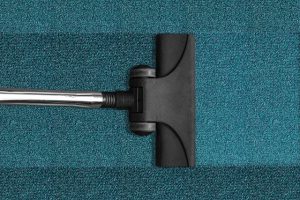Discover the top 10 secrets to maintaining the pristine appearance of your furniture! From simple cleaning hacks to surprising tricks, these tips will ensure that your furniture stays looking like new for years to come.
1. "Less is More": The Power of Regular Dusting
Keeping your furniture looking new and shiny isn't always about adding extra products or treatments. Sometimes, the simplest solution is the best one. Regular dusting can work wonders for preserving the appearance and condition of your furniture. Here are three reasons why less is more when it comes to dusting.
First, dust can scratch and dull the surface of your furniture. Even a small layer of dust can act as an abrasive when it's rubbed against the surface of your furniture. This is especially true for wooden furniture, which can be easily scratched and damaged. Regular dusting removes this layer of dust, preventing it from acting as an abrasive and keeping your furniture looking smooth and polished.
Secondly, dust can attract and trap moisture. Moisture can cause wood to warp, and it can lead to mold and mildew growth on upholstered furniture. Regular dusting removes the dust that can trap moisture, helping to keep your furniture dry and mold-free.
Finally, dust can harbor allergens and irritants. Dust mites, pet dander, and pollen can accumulate in the dust on your furniture. This can be a problem for people with allergies or respiratory issues. Regular dusting removes these allergens, creating a healthier environment in your home.
So how often should you dust your furniture? It depends on several factors, such as how much dust your home accumulates, how many people and pets live in your home, and how often your furniture is used. Generally, it's a good idea to dust at least once a week, but you may need to dust more often if you have allergies or if you live in a dusty area.
To dust your furniture, use a soft cloth or microfiber duster. Avoid using feather dusters, which can actually spread dust around instead of removing it. Start at the top of your furniture and work your way down, using a gentle touch to avoid scratching the surface. For hard-to-reach areas, use a vacuum cleaner with a brush attachment.

An image of a person dusting a wooden table with a soft cloth
2. How to Tackle Stubborn Stains?
Accidents happen, and sometimes our furniture bears the brunt of them. Whether it's a spilled glass of red wine or a muddy paw print from your furry friend, stubborn stains can be a headache to deal with. But don't despair – here are some tips on how to tackle those tough stains and keep your furniture looking its best.
First of all, it's important to act quickly when a spill occurs. The longer a stain sits, the harder it will be to remove. Blot the stain with a clean, absorbent cloth to remove as much of the liquid as possible. Avoid rubbing the stain, as this can push the liquid deeper into the fabric or upholstery.
Next, identify the type of stain you're dealing with. Different types of stains require different cleaning methods. For example, a water-based stain like coffee or tea can be removed with a mixture of water and dish soap, while an oil-based stain like lipstick or grease may require a solvent-based cleaner.
Before applying any cleaning solution, test it on a small, inconspicuous area of your furniture to make sure it doesn't cause any discoloration or damage. Once you've determined the right cleaning solution for your stain, apply it to the affected area and let it sit for a few minutes. Then, blot the stain with a clean cloth until the liquid is absorbed.
For particularly stubborn stains, you may need to repeat this process several times. Don't be tempted to use harsh chemicals or bleach, as these can damage your furniture. Instead, stick to gentle, non-toxic cleaning solutions.

An illustration of a person applying furniture polish to a wooden surface
4. 'Fluff' Your Way to Comfortable Cushions
Over time, even the most comfortable cushions can start to lose their plumpness and shape. But don't despair – with a little bit of effort, you can 'fluff' your way back to comfortable cushions that look and feel like new.
The first step is to remove the cushions from your furniture and give them a good shake. This will help to redistribute the filling and remove any loose debris or dust. For extra cleaning power, you can also use a vacuum cleaner with a soft brush attachment to remove any dirt or dust that has accumulated over time.
Next, take a closer look at the filling inside your cushions. If the filling is lumpy or sagging, you may need to add more filling to restore their shape. This can be done by carefully opening up the cushion cover and adding more filling to the affected areas. Be sure to use the same type of filling that is already inside your cushion to ensure a consistent feel.
If your cushions are still not as plump as you'd like, try 'fluffing' them up by hand. This involves grabbing the edges of the cushion and gently pulling them outwards and upwards, as if you were trying to stretch the cushion. This will help to redistribute the filling and create a more uniform shape.
Finally, consider investing in some cushion inserts or foam inserts to give your cushions an extra boost. These can be placed inside your existing cushion covers to provide additional support and plumpness. Just be sure to choose inserts that are the same size and shape as your cushions to ensure a proper fit.
5. When Should You Rotate Your Furniture?
Rotating your furniture is an easy and effective way to keep it looking like new. By redistributing the wear and tear, you can extend the life of your furniture and prevent premature aging. But how do you know when it's time to rotate your furniture? Here are some tips to help you decide.
1. The Cushions Are Starting to Sag
If your cushions are starting to sag or lose their shape, it's a sign that it's time to rotate your furniture. Over time, the weight of people sitting on the same spots can cause the cushions to compress and lose their support. By rotating your furniture, you can redistribute the weight and give the cushions a chance to recover their shape.
- 2. Uneven Wear and Tear
If you notice that some areas of your furniture are more worn than others, it's a sign that you need to rotate it. Uneven wear and tear can be caused by a variety of factors, including the way you sit, the amount of use, and the quality of the materials. By rotating your furniture, you can even out the wear and tear and prevent any one area from becoming too worn.
- 3. Change of season
Another good time to rotate your furniture is at the change of season. This is especially true if you have furniture that is exposed to direct sunlight or extreme temperatures. Rotating your furniture can help prevent fading, warping, and other damage caused by exposure to the elements.

A photo of a living room setup with furniture rotated for even wear
6. Why is Sunlight Your Furniture's Enemy?
While sunlight may be a welcome source of warmth and light in your home, it can actually be damaging to your furniture over time. Exposure to sunlight can cause fading, discoloration, and even damage to the fibers of your furniture's fabric or upholstery.
This is because sunlight contains ultraviolet (UV) rays, which can break down the dyes and pigments in your furniture's fabric. Over time, this can cause your furniture to lose its vibrant color and become dull or faded.
In addition to causing fading and discoloration, sunlight can also cause the fibers of your furniture's fabric or upholstery to become brittle and weakened. This can lead to cracks, tears, and other types of damage that can be costly to repair or replace.
To protect your furniture from sunlight damage, it's important to take a few simple precautions. For example, you can position your furniture away from windows or direct sunlight, or use curtains or blinds to block out the sun's rays.
Another option is to use UV-blocking products, such as sprays or films, that can help protect your furniture from the harmful effects of sunlight. These products can be applied directly to your furniture's fabric or upholstery, and can provide an extra layer of protection against fading and discoloration.
7. Mind the Gap: Don't Neglect Your Furniture's Legs
When it comes to furniture care, it's easy to focus on the visible surfaces like cushions, upholstery, and tabletops. However, one area that often gets overlooked is the furniture's legs. Neglecting your furniture's legs can lead to a variety of problems, from wobbling to damage and even collapse.
First and foremost, it's important to check your furniture's legs regularly for any signs of wear and tear. Look for cracks, splits, or other damage that could compromise the stability of the piece. If you notice any issues, take action immediately to prevent further damage and ensure the safety of anyone using the furniture.
Another key consideration when it comes to furniture legs is the type of flooring you have. Hardwood floors, tiles, and other hard surfaces can be easily scratched or damaged by furniture legs, especially if they're made of metal or other hard materials. To prevent this, consider adding felt pads or other protective covers to the bottom of your furniture legs.
In addition to protecting your floors, paying attention to your furniture's legs can also help prolong the life of the piece. Over time, furniture legs can become loose or wobbly, especially if they're not properly maintained. To prevent this, make sure to tighten any screws or bolts regularly, and consider adding additional support like braces or corner brackets if necessary.
Finally, don't forget about the aesthetic impact of your furniture's legs. They can be a key design element, adding style and personality to your space. Consider swapping out plain or outdated legs for more decorative options, or painting them to match your decor.

A close-up shot of a furniture leg with felt pads attached to protect the floor
10 Secrets to Keep Your Furniture Looking Like New:
| Secret | Description | Result | Frequency |
|---|---|---|---|
| Vacuum regularly | Regular vacuuming can help remove dust and dirt, which can damage the finish of your furniture. | Keeps furniture looking new | Weekly |
| Dust frequently | Using a soft cloth to dust your furniture regularly can help remove dirt and oils that can accumulate and damage the finish. | Maintains furniture's shine | Daily |
| Clean spills quickly | If you spill something on your furniture, clean it up immediately to avoid staining and discoloration. | Prevents damage | As needed |
| Keep out of direct sunlight | Exposure to direct sunlight can cause fading and discoloration of furniture over time. | Protects color | Always |
By following these 10 secrets, you'll be able to keep your furniture looking like new without having to resort to costly repairs or replacements. Give your furniture the love and care it deserves, and it will reward you with a beautiful and comfortable living space for years to come.






